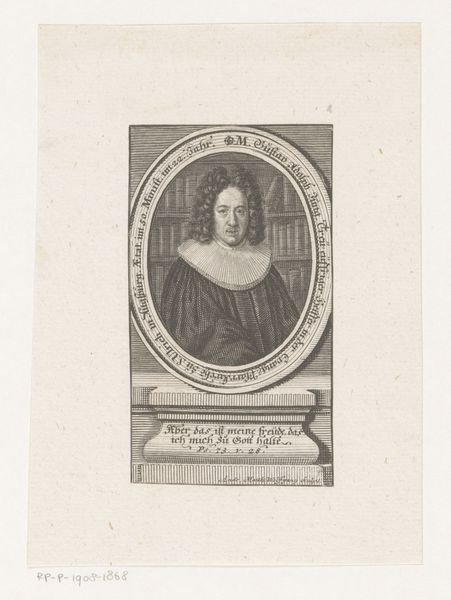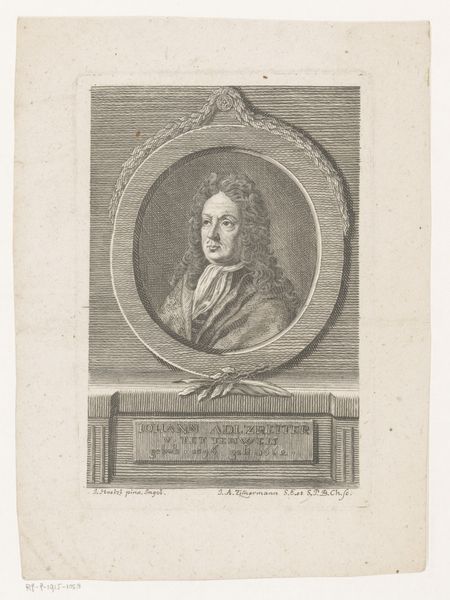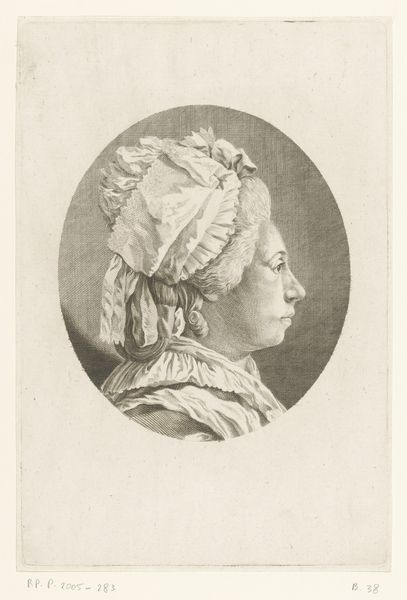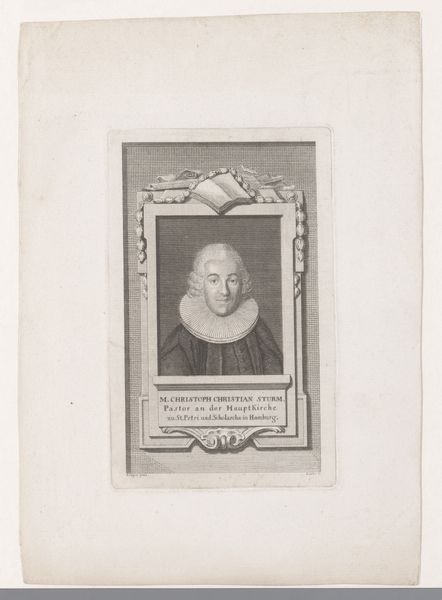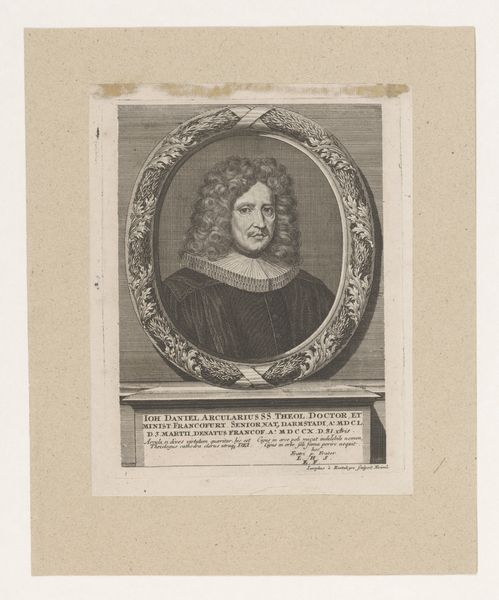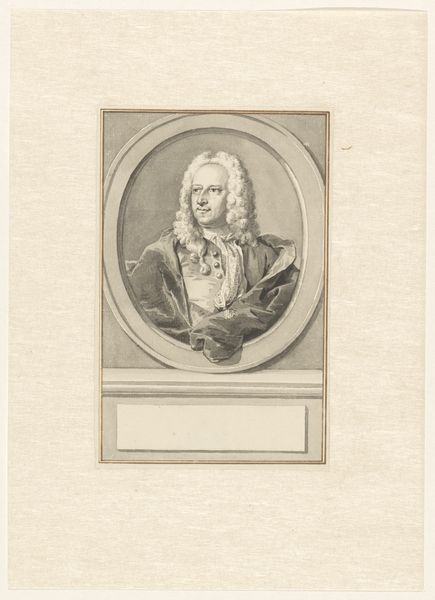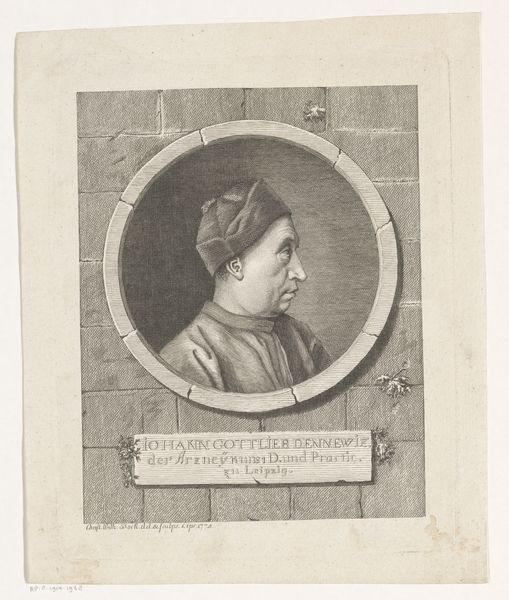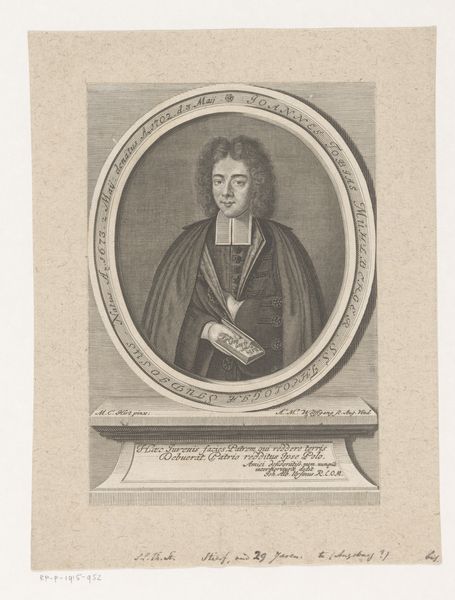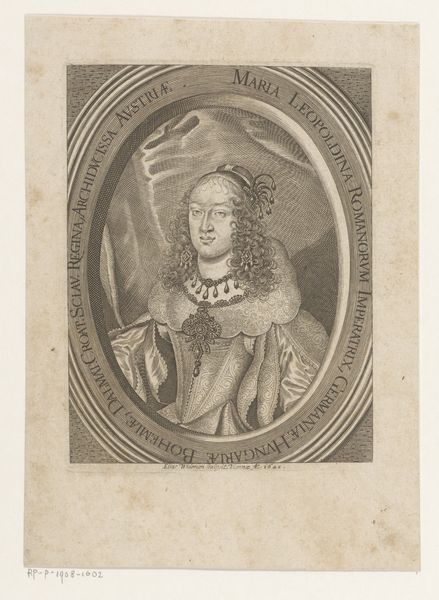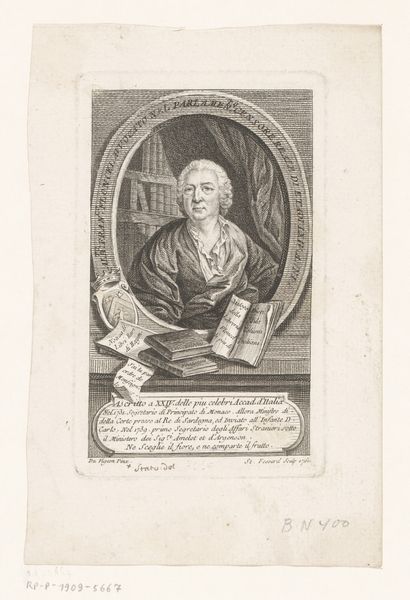
Dimensions: height 215 mm, width 138 mm
Copyright: Rijks Museum: Open Domain
Editor: This is "Portret van Margarethe Luther," an engraving by Johann Elias Haid, dating from around 1749-1809, at the Rijksmuseum. It has an austere, almost stoic quality, with a fascinating contrast between the smooth oval frame and the rough texture of the background. What do you see in this print? Curator: The most striking feature is the tension established through contrasting forms and textures. The rigid geometry of the rectangular background and the precise inscription below clash subtly with the curves of the portrait’s oval frame. Note how the play of light and shadow models her face, especially around the eyes, which seems to lend her an air of serene intensity. The graphic texture created by the engraving method accentuates the realism while creating patterns across the plane of the print. Does the graphic treatment compete with or enhance the subject’s representation? Editor: I think it enhances it. The lines almost feel like wrinkles, adding to the sense of age and wisdom. Is it significant that the print includes text? Curator: Absolutely. The text identifies the sitter but more importantly becomes a compositional element itself. Observe how it mirrors the shape and placement of the portrait oval above, creating a structured equilibrium within the image. The choice of font and the precise arrangement of the words add to the overall formality and contribute to the print's objective aesthetic. The typography is, in a sense, another portrait. What does its form say to you? Editor: That makes a lot of sense. The print becomes almost like a formal document. The balanced composition conveys authority and significance. Curator: Precisely. Through the considered use of line, form, and the inclusion of textual information, Haid elevates the subject beyond mere representation. It encourages us to see portraiture, even printmaking, as an intellectual and visual endeavor. Editor: I’ll definitely look at prints differently from now on. Thanks for pointing out the subtle formal elements that communicate so much!
Comments
No comments
Be the first to comment and join the conversation on the ultimate creative platform.

